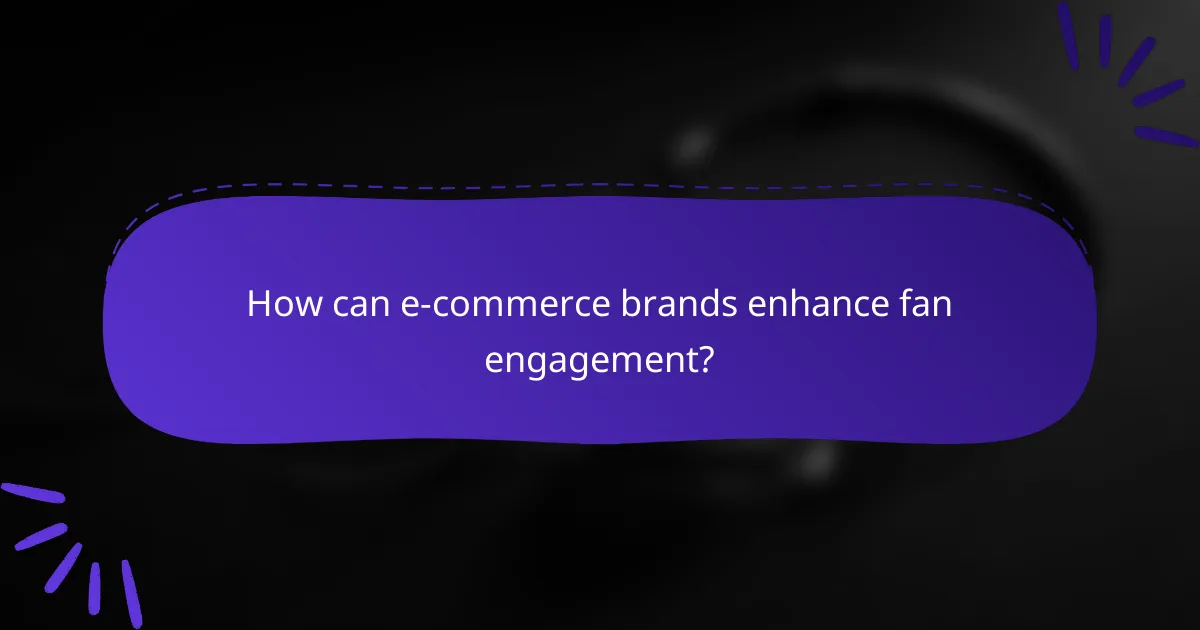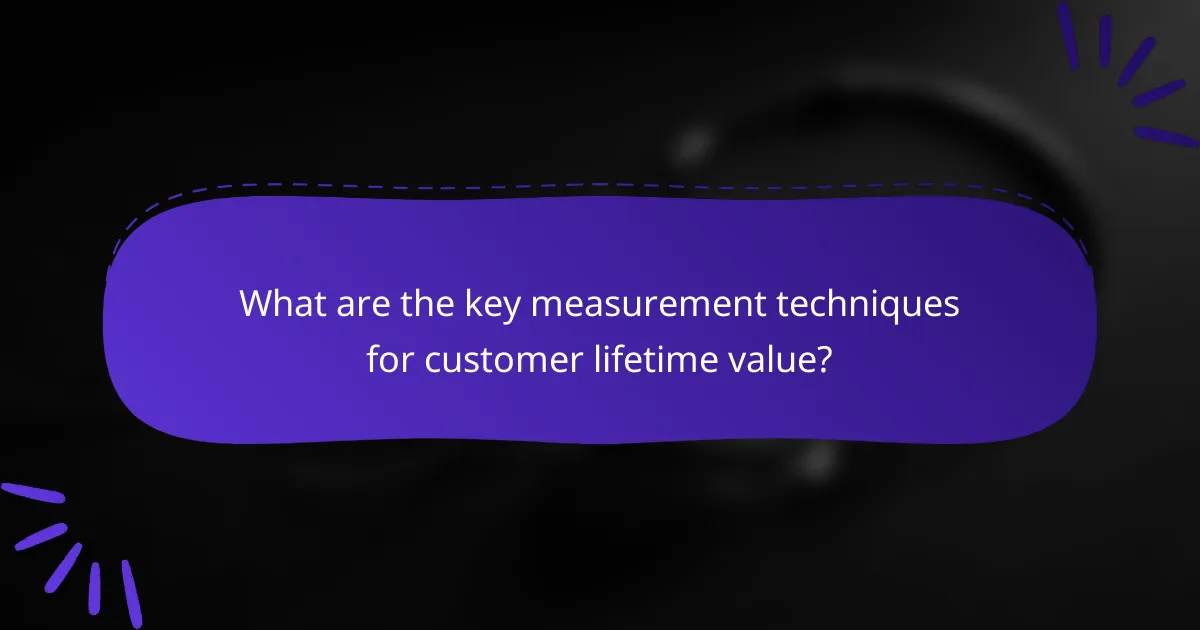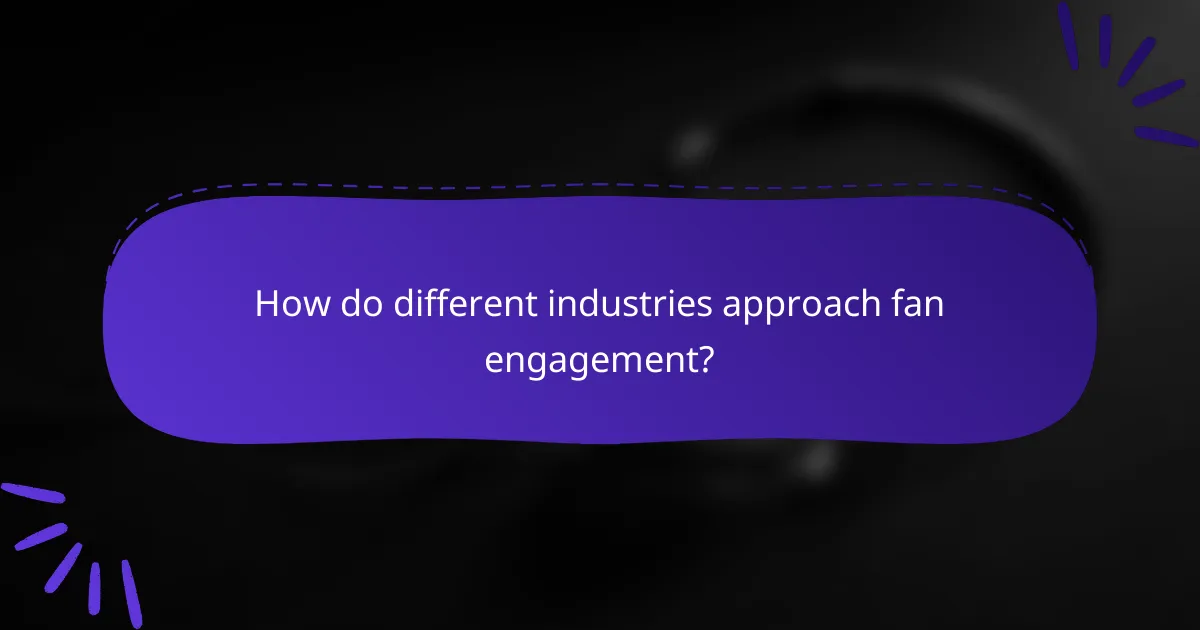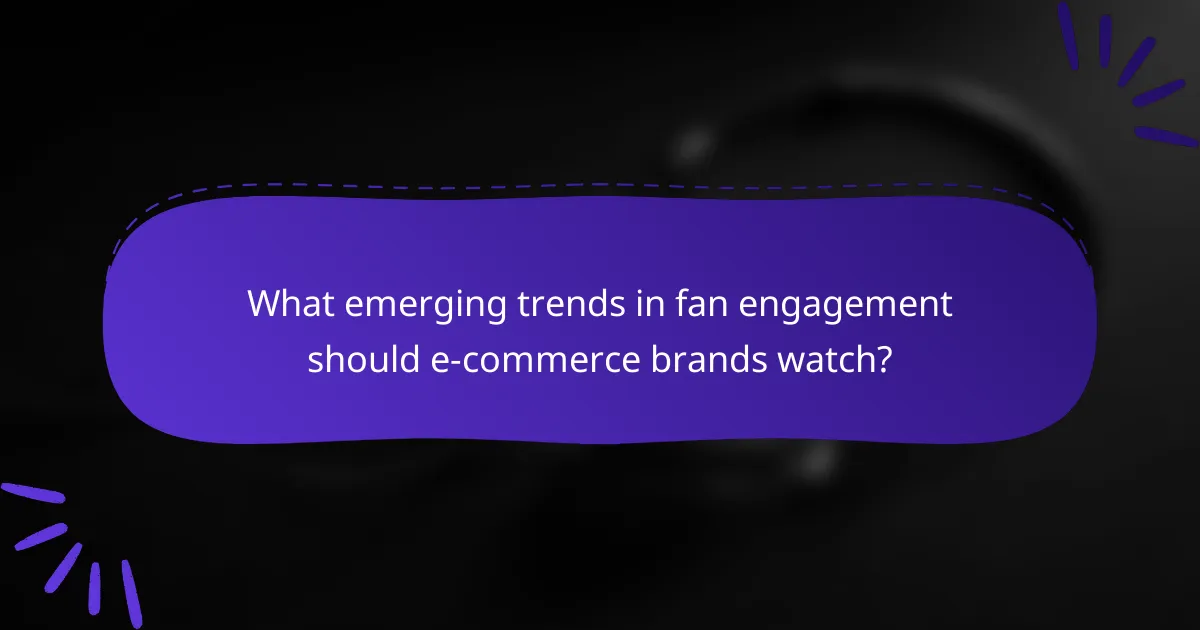Enhancing fan engagement is essential for e-commerce brands looking to build lasting relationships with their customers. By implementing targeted strategies that resonate with their audience and measuring customer lifetime value through various techniques, businesses can foster loyalty and create personalized experiences. This increased engagement not only strengthens brand awareness but also drives revenue and long-term success.

How can e-commerce brands enhance fan engagement?
E-commerce brands can enhance fan engagement by implementing targeted strategies that resonate with their audience. This involves understanding customer preferences and creating personalized experiences that foster loyalty and community.
Utilizing personalized marketing strategies
Personalized marketing strategies focus on tailoring content and offers to individual customer preferences. Brands can use data analytics to segment their audience and deliver targeted emails, product recommendations, and promotions that align with their interests.
For example, an online clothing retailer might send personalized style suggestions based on previous purchases. This approach not only increases engagement but also drives conversions, as customers are more likely to respond to offers that feel relevant to them.
Implementing loyalty programs
Loyalty programs incentivize repeat purchases by rewarding customers for their loyalty. These programs can include points systems, tiered rewards, or exclusive discounts that encourage ongoing engagement with the brand.
For instance, a brand might offer points for every dollar spent, which can be redeemed for discounts or special products. This not only boosts customer retention but also enhances the overall customer lifetime value, as loyal customers tend to spend more over time.
Leveraging social media interactions
Social media platforms provide an excellent avenue for brands to engage with fans directly. By actively responding to comments, sharing user-generated content, and hosting live events, brands can create a sense of community and connection with their audience.
Brands should consider running interactive campaigns, such as polls or contests, to encourage participation and feedback. This two-way communication fosters a deeper relationship, making customers feel valued and more likely to engage with the brand regularly.
Creating exclusive content and experiences
Offering exclusive content and experiences can significantly enhance fan engagement. This might include behind-the-scenes access, early product launches, or members-only events that make customers feel special and appreciated.
For example, a brand could host a virtual event where loyal customers get to meet designers or influencers. Such exclusive opportunities not only strengthen the bond between the brand and its fans but also encourage word-of-mouth promotion, as customers share their unique experiences with others.

What are the key measurement techniques for customer lifetime value?
Key measurement techniques for customer lifetime value (CLV) include calculating average purchase value, assessing purchase frequency, and evaluating customer retention rates. These techniques provide insights into how much revenue a customer generates over their relationship with a business, guiding marketing and sales strategies.
Calculating average purchase value
To calculate average purchase value, divide total revenue by the number of purchases made within a specific period. This metric helps businesses understand how much customers typically spend per transaction, which is crucial for estimating CLV.
For example, if a company generates $50,000 in revenue from 1,000 purchases, the average purchase value would be $50. Regularly monitoring this figure can help identify trends and inform pricing strategies.
Assessing purchase frequency
Purchase frequency measures how often customers make purchases within a defined timeframe, typically expressed as the number of purchases per customer per year. This metric is essential for understanding customer behavior and predicting future sales.
For instance, if a customer buys from a store four times a year, the purchase frequency is 4. Businesses should aim to increase this frequency through targeted marketing campaigns and loyalty programs to enhance overall CLV.
Evaluating customer retention rates
Customer retention rate indicates the percentage of customers who continue to engage with a business over time. A high retention rate suggests strong customer loyalty, which directly impacts CLV.
To calculate retention rate, take the number of customers at the end of a period, subtract new customers acquired during that period, and divide by the number of customers at the start. For example, if a company starts with 100 customers, gains 20 new ones, and ends with 90, the retention rate is 70%. Focusing on improving customer satisfaction can significantly boost retention rates and, consequently, CLV.

What benefits does increased fan engagement provide?
Increased fan engagement leads to stronger relationships between brands and their customers, resulting in enhanced loyalty, brand awareness, and revenue. By actively involving fans, organizations can create a more dedicated customer base that contributes to long-term success.
Boosting customer loyalty
Customer loyalty is significantly enhanced through increased fan engagement as fans feel more connected to the brand. Engaged fans are more likely to return for future purchases and recommend the brand to others, creating a cycle of loyalty that can last for years.
To foster loyalty, brands should focus on personalized experiences, such as tailored communications and exclusive offers. Regular interaction through social media and events can also strengthen this bond, making fans feel valued and appreciated.
Enhancing brand awareness
Increased fan engagement naturally boosts brand awareness as engaged fans share their experiences with their networks. This word-of-mouth promotion is often more effective than traditional advertising, as it comes from trusted sources.
Brands can enhance awareness by encouraging fans to share content, participate in contests, or create user-generated content. Utilizing social media platforms effectively can amplify these efforts, reaching a broader audience and attracting new fans.
Increasing revenue through repeat purchases
Engaged fans are more likely to make repeat purchases, directly impacting revenue. When fans feel a connection to a brand, they are inclined to choose it over competitors, leading to increased sales over time.
To capitalize on this, brands should implement loyalty programs that reward repeat purchases and encourage ongoing engagement. Offering exclusive deals or early access to new products can further incentivize fans to return, ultimately boosting overall revenue.

What frameworks exist for measuring customer lifetime value?
Several frameworks can effectively measure customer lifetime value (CLV), helping businesses understand the long-term value of their customers. These frameworks include RFM analysis and customer segmentation models, each offering unique insights into customer behavior and profitability.
RFM analysis (Recency, Frequency, Monetary)
RFM analysis evaluates customers based on three key metrics: Recency, Frequency, and Monetary value. Recency measures how recently a customer has made a purchase, Frequency tracks how often they buy, and Monetary assesses how much they spend. This method helps identify high-value customers and tailor marketing strategies accordingly.
To implement RFM analysis, assign scores to customers based on their performance in each category. For example, customers who purchased within the last month might score higher in Recency than those who haven’t bought in over six months. This scoring can help prioritize marketing efforts and improve customer retention.
Customer segmentation models
Customer segmentation models categorize customers into distinct groups based on shared characteristics, such as demographics, purchasing behavior, or preferences. This approach allows businesses to tailor their marketing strategies to specific segments, enhancing engagement and increasing CLV.
Common segmentation criteria include age, location, buying patterns, and customer loyalty. For instance, a sports apparel brand might segment customers into casual buyers and dedicated athletes, enabling targeted promotions that resonate with each group. This targeted approach can lead to higher conversion rates and improved customer satisfaction.

How do different industries approach fan engagement?
Different industries utilize unique strategies for fan engagement, tailoring their approaches to meet the specific needs and preferences of their audiences. By understanding these methods, businesses can enhance customer lifetime value and foster stronger connections with their fans.
Case study: Sports teams and fan loyalty
Sports teams often focus on building fan loyalty through membership programs, exclusive content, and community events. These initiatives encourage fans to engage consistently, increasing their lifetime value. For example, many teams offer season ticket packages that include perks like early access to tickets and merchandise discounts.
Additionally, leveraging social media platforms allows teams to interact directly with fans, creating a sense of community. Engaging content, such as behind-the-scenes footage or player Q&A sessions, can significantly enhance fan loyalty and retention.
Case study: Music festivals and audience interaction
Music festivals engage audiences by creating immersive experiences that go beyond just performances. Many festivals utilize mobile apps to provide real-time updates, interactive maps, and personalized schedules, enhancing the overall attendee experience. This approach encourages festival-goers to spend more time and money at the event.
Furthermore, festivals often incorporate social media campaigns that encourage attendees to share their experiences online. This not only boosts engagement during the event but also helps in building anticipation for future festivals, ultimately increasing customer lifetime value.

What emerging trends in fan engagement should e-commerce brands watch?
E-commerce brands should focus on trends like AI integration, social commerce, and community-driven platforms to enhance fan engagement. These trends not only personalize the shopping experience but also foster loyalty and increase customer lifetime value.
Integration of AI for personalized experiences
Integrating AI into e-commerce can significantly enhance personalized experiences for fans. By analyzing customer data, AI can tailor product recommendations, marketing messages, and even website layouts to individual preferences, leading to higher engagement and conversion rates.
Brands should consider implementing AI chatbots for real-time customer support and personalized shopping assistance. These tools can handle inquiries efficiently, providing users with immediate answers and recommendations based on their browsing history and preferences.
When adopting AI, it’s crucial to ensure data privacy and compliance with regulations such as GDPR. Brands should transparently communicate how they use customer data and offer options for users to manage their preferences.


